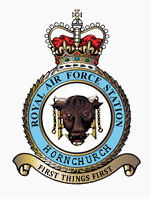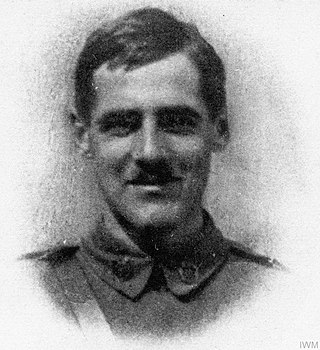Related Research Articles

Air Marshal Robert Leckie, was an air officer in the Royal Air Force and later in the Royal Canadian Air Force, and served as Chief of the Air Staff of the Royal Canadian Air Force from 1944 to 1947. He initially served in the Royal Naval Air Service during the First World War, where he became known as one of "the Zeppelin killers from Canada", after shooting down two airships. During the inter-war period he served as a Royal Air Force squadron and station commander, eventually becoming the RAF's Director of Training in 1935, and was Air Officer Commanding RAF Mediterranean from 1938 until after the beginning of the Second World War. In 1940 he returned to Canada where he was primarily responsible for the British Commonwealth Air Training Plan, transferring to the Royal Canadian Air Force in 1942.
This is a list of aviation-related events from 1916:

Number 39 Squadron is an inactive squadron of the Royal Air Force. It last operated the General Atomics MQ-9A Reaper from Creech AFB, Nevada, between January 2007 and July 2022. It had previously operated the English Electric Canberra PR.7, PR.9 and T.4 from RAF Marham, Norfolk, as No. 39 Squadron between July 1992 and July 2006.

Reginald Alexander John Warneford, VC, also known as Rex Warneford, was a British aviator and Royal Naval Air Service officer who received the Victoria Cross for air-bombing a Zeppelin during the First World War. It was the first victory of a heavier-than-air aircraft over a lighter-than-air dirigible.

Royal Air Force Hornchurch, or more simply RAF Hornchurch, is a former Royal Air Force sector station in the parish of Hornchurch, Essex, located to the southeast of Romford. The airfield was known as Sutton's Farm during the First World War, when it occupied 90 acres (360,000 m2) of the farm of the same name. It was used for the protection of London, being 14 miles (22.5 km) east north-east of Charing Cross.

William Leefe Robinson VC was the first British pilot to shoot down a German airship over Britain during the First World War. For this, he was awarded the Victoria Cross (VC), the highest award for gallantry in the face of the enemy that can be awarded to British and Commonwealth forces. He was the first person to be awarded the VC for action in the UK.
Major Sir Egbert "Bertie" Cadbury was a British businessman, a member of the Cadbury family, who as a First World War pilot shot down two Zeppelins over the North Sea: L.21 on 28 November 1916, and L.70 on 6 August 1918: the latter while flying a De Havilland DH.4 with Robert Leckie as observer/gunner.

A German air campaign of the First World War was carried out against Britain. After several attacks by seaplanes, the main campaign began in January 1915 with airships. Until the Armistice the Marine-Fliegerabteilung and Die Fliegertruppen des deutschen Kaiserreiches mounted over fifty bombing raids. The raids were generally referred to in Britain as Zeppelin raids but Schütte-Lanz airships were also used.
Flight Lieutenant James Anderson Slater was a British First World War flying ace, credited with 24 aerial victories. He served in the Royal Air Force (RAF) as an instructor after the war until killed in a flying accident.
Captain Alan John Bott was a World War I flying ace who was credited with five aerial victories. He later became a journalist, editor and publisher who founded Pan Books.
John Geoffrey Sadler Candy, was a British aviator, military officer, and flying ace credited with six aerial victories during the First World War. He transferred to the Royal Air Force in 1919, and retired in 1937, but was recalled to serve throughout the Second World War, retiring permanently in 1946.
Captain Thomas Frederick Le Mesurier DSC & Two Bars was a British flying ace of the First World War credited with seven aerial victories. Le Mesurier was awarded the Distinguished Service Cross (DSC) and Two Bars for his conspicuous service in bombing operations.
Flight Lieutenant Edmund Roger Tempest was a British First World War flying ace credited with 17 aerial victories.
Group Captain Gilbert Ware Murlis Green, was a Royal Air Force career officer credited with eight aerial victories. He was a pioneer among fighter aces, and his victories were scored in a variety of theatres and flying environments. He was successful on both the Western Front, in Greece, and on his home soil. He also commanded two of the original night fighter squadrons.
Group Captain Frederick Sowrey, was a British aviator, military officer, and a flying ace of the First World War credited with thirteen aerial victories. He was most noted for his first victory, when he shot down Zeppelin L32 during its bombing raid on England. Having risen rapidly in rank during the war, he remained in service until 1940.

Captain Noel William Ward Webb was a British World War I flying ace credited with fourteen aerial victories. He also claimed the life of German ace Leutnant Otto Brauneck for his ninth victory.

Major Frank Widenham Goodden was a pioneering British aviator who served as chief test pilot for the Royal Aircraft Factory during the First World War.
Alfred de Bathe (Bath) Brandon was a New Zealand lawyer and military aviator who served in the First World War, and was credited with the destruction of two Zeppelin airships.

Air Vice Marshal Reginald Leonard George Marix, was a British aviator, originally with the Royal Naval Air Service, who later reached air officer rank in the Royal Air Force. He is credited with being the first pilot to destroy a Zeppelin, when in October 1914 he bombed the airship sheds at Düsseldorf. A flying accident in 1916 ended his flying career, but he remained in the Royal Air Force, serving in various staff positions, and during the Second World War commanded two reconnaissance groups, and from 1943 to 1945 the group responsible for ferrying aircraft from North America to Europe.

LZ 72 was an R Class super-zeppelin belonging to the Imperial German Navy. It was commanded by Kapitänleutnant Heinrich Mathy, an experienced commander, and took part in several raids over London during World War I. It also participated in a reconnaissance role during the Sunderland raid of 19 August 1916. Its last flight was launched late at night on 1 October 1916. Several miles north of London, it was caught in searchlights and anti-aircraft fire. During this engagement, 2nd Lt. Wulstan J. Tempest was on patrol and spotted the zeppelin. He proceeded to engage the airship with incendiary rounds, causing the ship to burst into flames and crash in a field near Potter's Bar. The entire crew died, and were originally buried there but were reinterred at Cannock Chase German Military Cemetery in the 1960s. After this disastrous crash, the Imperial German Navy began reducing the number of zeppelin raids.
References
- ↑ "Major Wulstan Joseph Tempest". Lives of the First World War. Retrieved 19 November 2016.
- ↑ "Wulstan Tempest". The RAF Hornchurch Project. Retrieved 19 November 2016.
- ↑ Massue, Melville Henry (1905). "Descendents of Stephen Tempest of Broughton". The Plantagenet Roll of the Blood Royal, being a complete table of all the descendants now living of Edward III, King of England. Vol. Descendents of George, Duke of Clarence. London: T. C. & E. C. Jack. p. 320. Retrieved 19 November 2016.
- ↑ Fox-Davies, Arthur Charles (1929). Armorial Families: A Directory of Gentlemen of Coat-armour. Vol. II (7th ed.). London: Hurst & Blackett. p. 1908. Retrieved 19 November 2016.
- ↑ "Ackworth Grange, Ackworth". British Listed Buildings. 2016. Retrieved 19 November 2016.
- 1 2 3 4 5 "Personals: Items". Flight . VIII (406): 914. 19 October 1916. Retrieved 19 November 2016.
- 1 2 Tempest, Eleanor Blanche. "Tempests of Broughton-in-Craven and Coleby, Co. Lincoln". Tempest Pedigrees. p. 444. Retrieved 19 November 2016.
- ↑ "Famous OW's" (PDF). Association of Old Worcesters'. Retrieved 19 November 2016.
- 1 2 3 "Et Cietera". The Tablet . 128 (3989): 544. 21 October 1916. Retrieved 19 November 2016.
- ↑ "No. 29573". The London Gazette. 9 May 1916. p. 4558.
- ↑ Everts, Sarah. "When Chemicals Became Weapons of War". Chemical & Engineering News. Retrieved 19 November 2016.
- ↑ "No. 29653". The London Gazette (Supplement). 4 July 1916. p. 6706.
- 1 2 "Memorial to No. 39 (H.D.) Squadron". Flight. XXIV (1221): 454. 20 May 1932. Retrieved 19 November 2016.
- 1 2 Morgan, Tom. "Decisions at Potters Bar: "Burn or jump – what will you do?"". Hellfire Corner. Retrieved 19 November 2016.
- 1 2 Rimmell, Ray (1 October 2016). The Last Flight of the L-31. Albatros Productions. p. 16. Retrieved 19 November 2016.
- ↑ "No. 29783". The London Gazette. 13 October 1916. p. 9862.
- ↑ "Photograph of William Leefe Robinson; Wulstan Joseph Tempest; Frederick Sowrey". National Portrait Gallery, London . Retrieved 19 November 2016.
- ↑ "No. 29919". The London Gazette (Supplement). 23 January 1917. p. 946.
- 1 2 3 4 5 Robertson, F. A. de V. (19 August 1932). "No. 100 (Bomber) Squadron". Flight. XXIV (1234): 774–779. Retrieved 19 November 2016.
- ↑ "No. 30005". The London Gazette. 30 March 1917. pp. 3115–3116.
- ↑ "No. 30181". The London Gazette (Supplement). 13 July 1917. p. 7050.
- ↑ "No. 30340". The London Gazette (Supplement). 16 October 1917. p. 10711.
- ↑ "No. 30561". The London Gazette (Supplement). 5 March 1918. p. 2936.
- ↑ "No. 30519". The London Gazette (Supplement). 8 February 1918. p. 1902.
- ↑ "36 Squadron". North East Land, Sea and Air Museums. Retrieved 19 November 2016.
- ↑ Robertson, F. A. De V. (24 April 1931). "No. 101 (Bomber) Squadron". Flight. XXIII (1165): 353. Retrieved 19 November 2016.
- ↑ "No. 31522". The London Gazette. 26 August 1919. p. 10759.
- ↑ "Casualty Details: Tempest, Wilfred Norman". Commonwealth War Graves Commission . 2016. Retrieved 19 November 2016.
- ↑ "Edmund Tempest". The Aerodrome. 2016. Retrieved 19 November 2016.
- ↑ "To be Married". Flight. XI (542): 651. 15 May 1919. Retrieved 19 November 2016.
- ↑ "Married". Flight. XV (746): 204. 12 April 1923. Retrieved 19 November 2016.
- ↑ "Zeppelin brought down over Potters Bar". Brookmans Park Newsletter. Retrieved 19 November 2016.
- ↑ Handley, Rhys (27 September 2016). "First World War Zeppelin crash over Potters Bar commemorated 100 years later in Oakmere Park". Barnet & Potters Bar Times . Retrieved 19 November 2016.
- ↑ "Tributes paid at Zeppelin crash centennial event". Hertsmere Borough Council . 3 October 2016. Retrieved 19 November 2016.